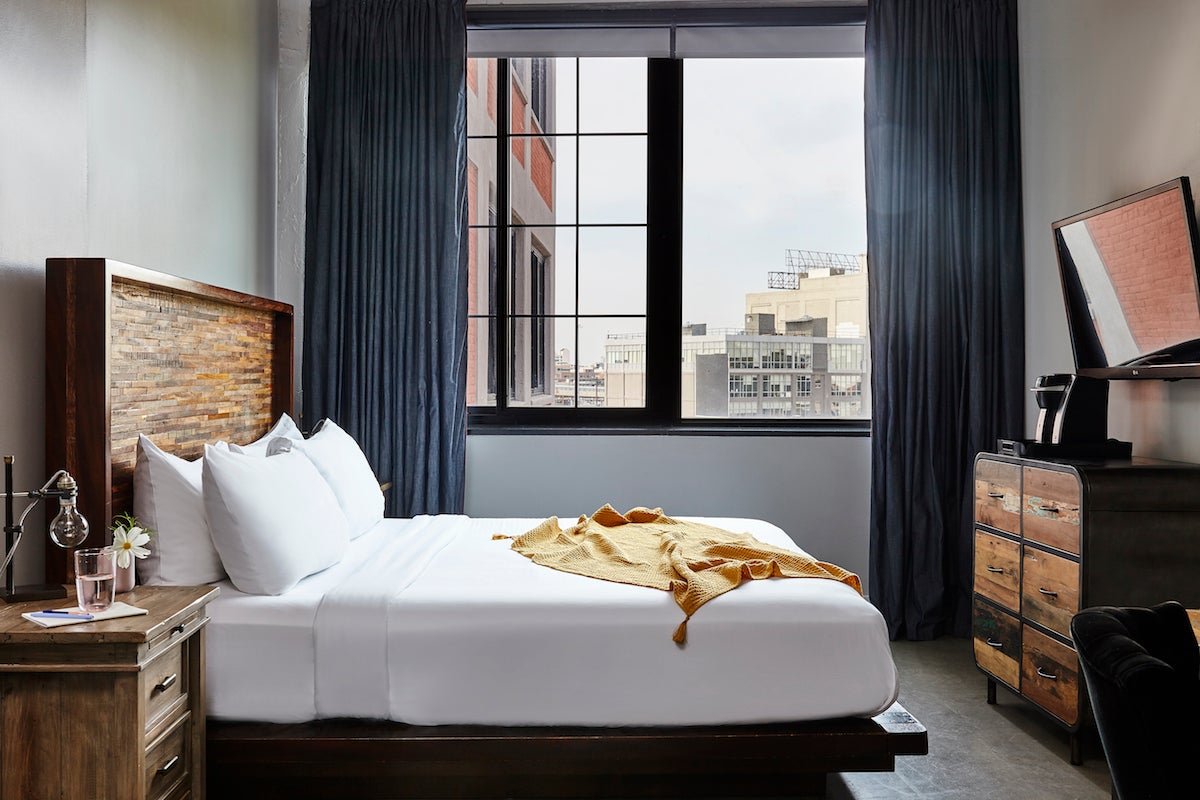Rugged individualism? That’s so 2010s. The next decade will be all about communal everything. It started at the office, with the rise of coworking (sure, the biggest player in the game is currently wobbling, but the cultural phenomenon is here to stay). Only natural then, that the “co-” movement has come for the home.
“Co-living,” in rough terms, has come to refer to a spate of startups that create communal housing. Each has its own flavor, but in essence, it’s a few old things reorganized and repackaged in a way that feels very new. Residents live in furnished studio units that can be rented short-term or for extended stays. A host of communal facilities, like gyms, cafes, pools, movie theaters and workspaces are aimed at young professionals (the demographic skews millennial). Needless to say, there’s an emphasis on good WiFi.

In the States, companies like Common, Ollie, and WeWork’s WeLive have already established a presence in major markets. Now, a major player from across the pond is setting up shop.
Entrepreneur Reza Merchant’s The Collective has already established a significant footprint in London, with two co-living facilities that hold over 1,000 apartment units. The first stateside location to open up? The Collective Paper Factory in Queens, New York, focused on short-term stays. Like many of its competitors, The Paper Factory is a little bit hotel, a little bit commune, a little bit dorm—all packaged for the flexibility demanded by the digitally nomadic.
Conceptually, The Collective isn’t radically different than its American competitors. However, backed by a staggering $850 million investment, Merchant is clearly thinking growth, not caution. Thus far, his company has acquired properties in Miami, New York and Chicago. (It’s also. looking at other European markets, with a total of 8,500 units in development worldwide.)
Merchant says that The Collective plays into a squeeze on urban housing options and a contemporary desire for community. “Our world is highly connected by travel and tech, yet people are lonelier than ever,” he says. “[The Collective] addresses increasingly urgent and universal urban issues like affordability, loneliness and the homogenization of space. The amount of people suffering from these factors will only grow.”
Aesthetically, co-living presents a design challenge. The goal is to present a seamless experience across facilities, so that a customer who goes from a location in Miami to a location in London never feels out of place. How to design a signature look, without inadvertently creating an anonymous, monolithic vibe? Each co-living company has its own approach.
Common has a spare, Scandi-lennial vibe, all white space and blonde wood. Ollie focuses on multifunctional pieces. WeLive is too-cool-for-school urban minimalism. Rooms in The Paper Factory have some chic designer touches—vibey geometric lamps and patterned tile. It also may be the only coworking facility to feature rooms with patinaed wood.
Merchant says his company has tried to develop relationships with local partners to keep each facility fresh: “We’ve partnered with Brooklyn Grange to curate our plant selection throughout the space [at the Queens facility], as well as provide the greens for our forthcoming in-house restaurant, Ama. Our art program aims to highlight neighborhood artists and makers, in an effort to orient our members and bring the surrounding area into our spaces.”
So is co-living officially a thing? Sort of. “While co-living is growing in the public consciousness, it’s not ‘a thing,’” says Merchant. “It’s more of a thing now, because people and their living situations are under more strain than ever. The demand is there. The question is: How quickly and enthusiastically will various gateway cities enable us and others to address the demand with supply at scale?”




























